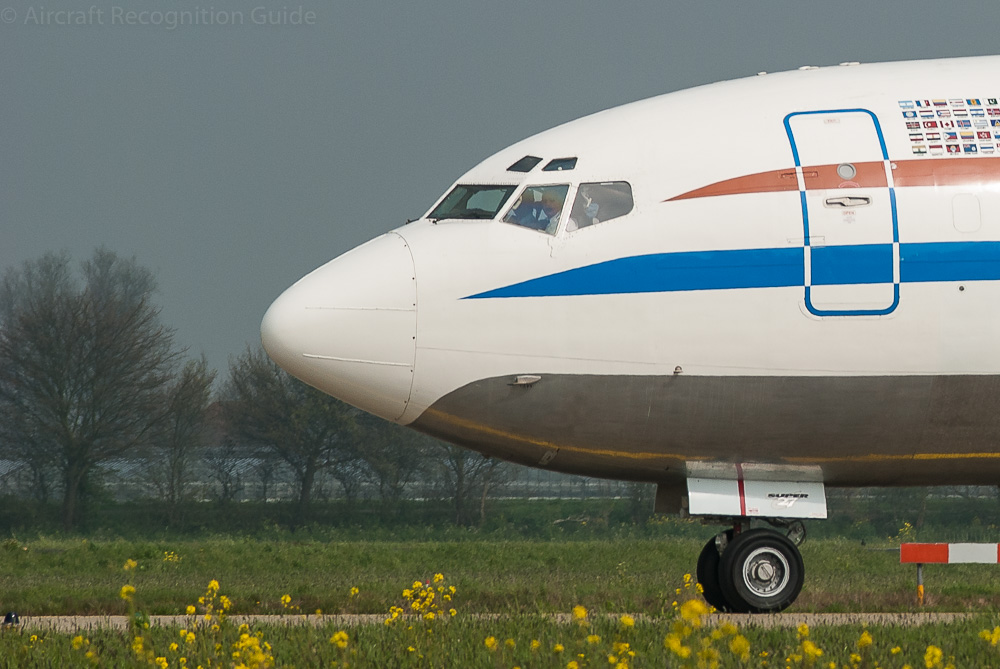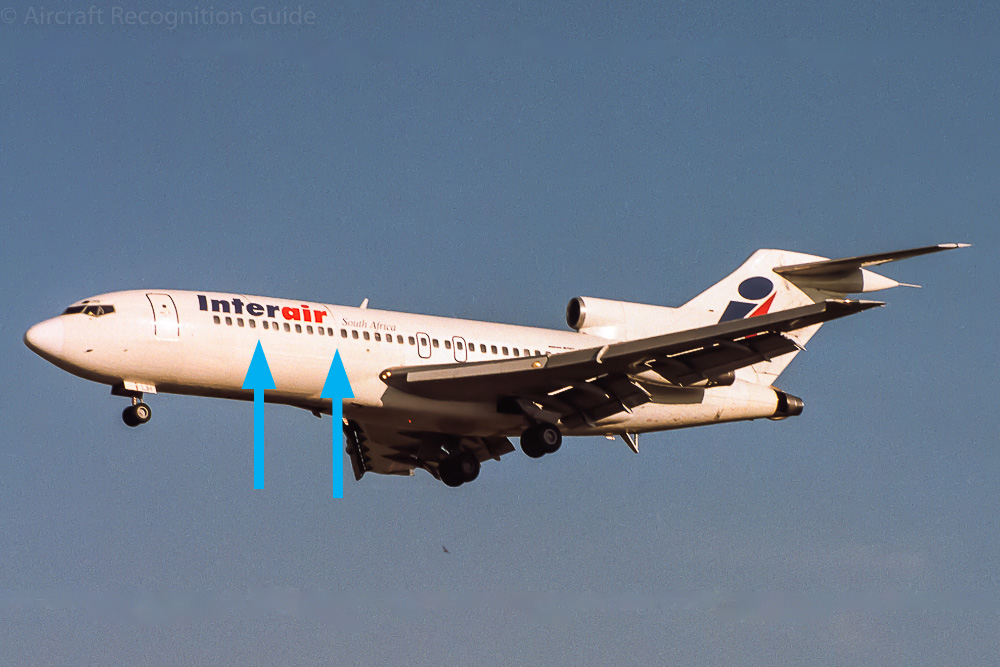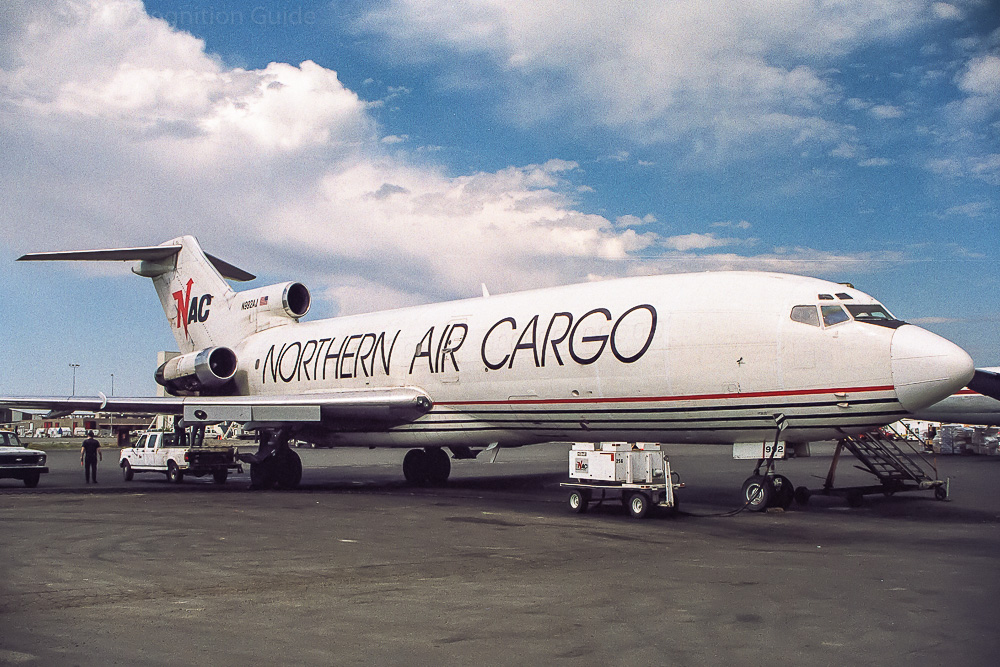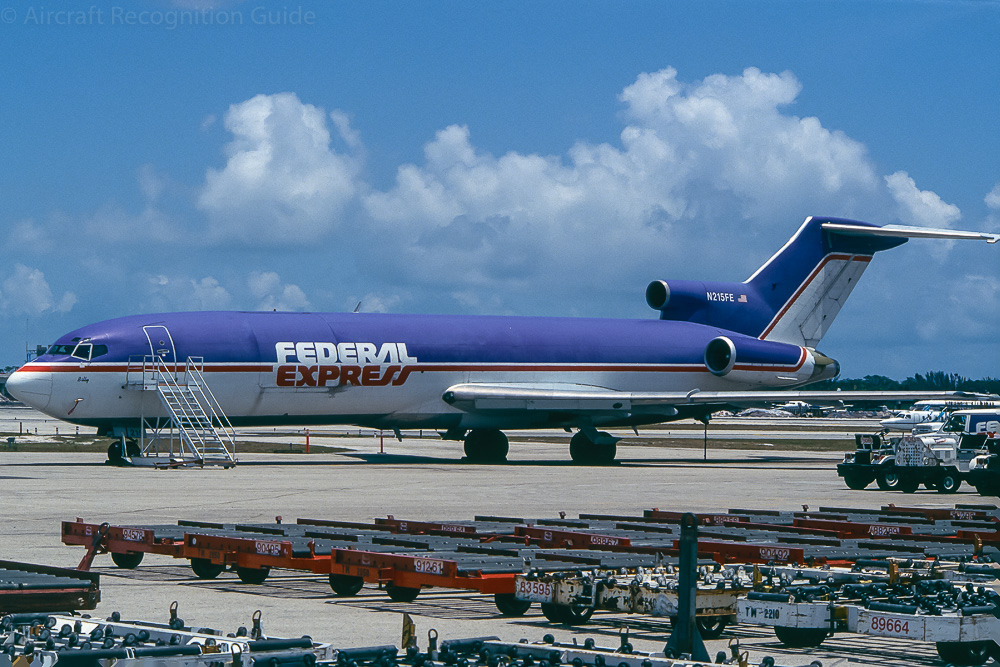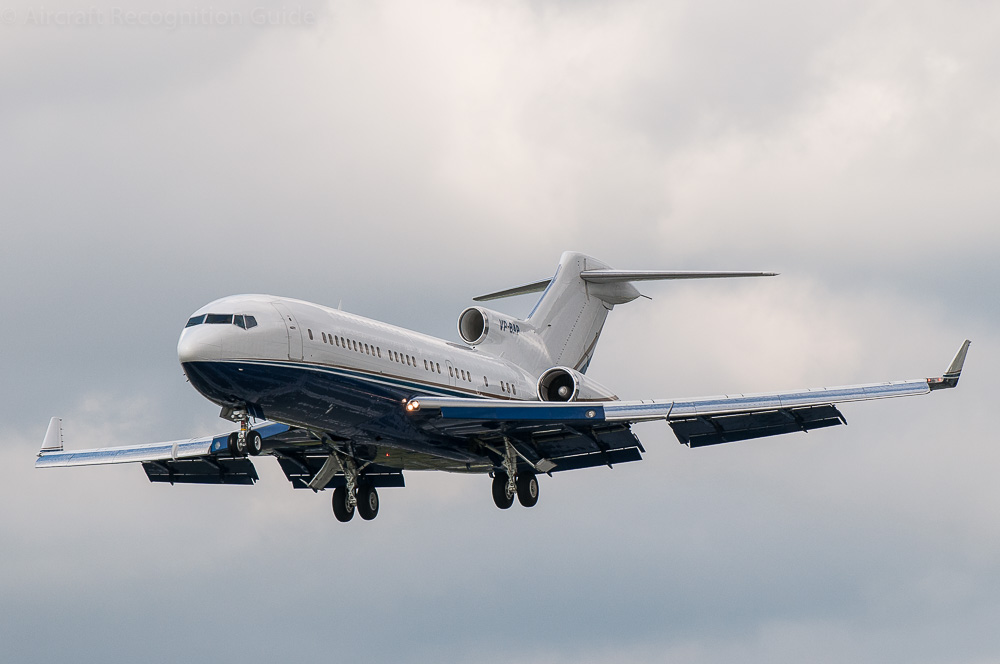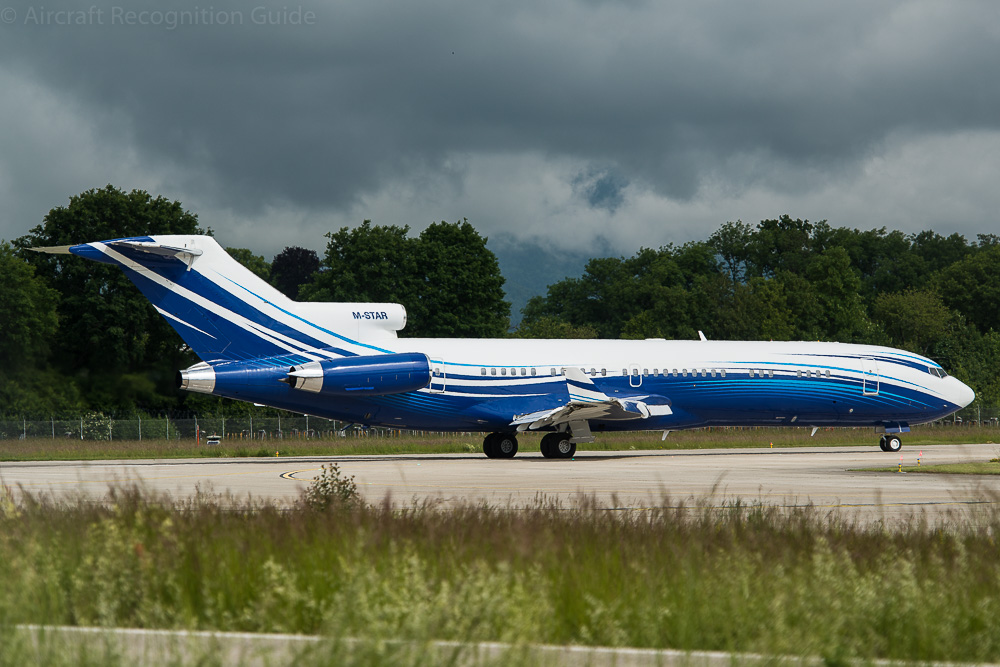
Boeing 727
For a long time the Boeing 727 was the most built airliner in the world. To recognise this trijet airliner with three engines at/in the rear fuselage from the other in this category you can look for the typical Boeing nose with two eyebrow windows and V shaped underside of the cockpit side windows, inherited from the 707 and continued on the first three generations 737. Moreover, the Boeing 727 has two wheels on each main landing gear leg. The aircraft has no forward pointing bullet fairing at the top of the vertical stabiliser. Instead it has a backward pointing bullet fairing. Finally the engines have a single exhaust.
Different versions
To differentiate between the 727 subtypes you have to look at
- the length of the fuselage
- the shape of the centre engine air intake
- the shape of the engine nacelles
- the presence of a cargo door
Note that some Boeing 727s have been retrofitted with winglets and/or engine hushkits, but this is not reflected in the type designation.
Boeing 727-100
The first version of Boeing 727 was the series 100, which is the short-body version. Typical for the short-body 727s is the oval shaped air intake for the centre engine. On the long-body aircraft it is round. Unlike the 727-100C and -100QC mentioned below it has no cargo door. Note that in many cases the "1" of the 100 is omitted from the full type designation. For example aircraft for United Airlines were delivered as 727-22, and not as 727-122.
The US Air Force has used five 727-100s, which were converted commerical aircraft. They were designated C-22A and C-22B, depending on the original aircraft type.
Boeing 727-100C & -100QC
Confusion possible with
Hawker Siddeley HS121 Trident

The Hawker-Siddeley Trident has as main differentiating characteristic a sidewards retracting nose landing gear and four wheels on the main landing gear legs, all on one axis.
Tupolev Tu-154
The other similar sized tri-jet is the Tupolev 154. This can best be distinguished from the Boeing 727 by its main landing gear, with six wheels on each leg. Also note the forward pointing bullet fairing on top of the vertical stabiliser.
Yakovlev Yak-42
Finally the Yak-42 is a bit smaller than the Boeing 727-100, but more notable are the engines with separate fan and core exhausts.
The 727-100C and -100QC are respectively the Convertible and Quick Change variants of the basic 100 series. The subtypes only differ by the type of cargo floor. Both have a large cargo door on the left side, in front of the wing. Sometimes the cargo door is not clearly visible, but you can also recognise the version by the two cabin windows close together, at the beginning and end of the door.
The Boeing 727-100C has a large cargo door, for which some cabin windows needed to be moved a bit, marked by the arrows.
Boeing 727-100F
Original 727-100 passenger aircraft converted to cargo aircraft are known as 727-100F. Most often the cabin windows of these aircraft have been replaced by metal plugs. However, this may also be the case for 727-100C and -100QC aircraft used solely for transporting cargo. These retain their original designation.
A passenger Boeing 727-100 converted to freighter, designated 727-100F, has no cabin windows anymore.
Boeing 727-100QF
Dee Howard designed a re-engine modification for UPS to extend the life of their 727-100 freighters. The company used the Rolls Royce Tay engines for this. These have a much larger diameter than the original Pratt & Whitney JT8Ds. Therefore a structural modification was required for the middle engine. It has a larger, round air intake resulting in a bulge on top of the inlet. The modified model is known as Boeing 727-100QF, Quiet Freighter.
One corporate 727-100 was also converted with Tay engines.
UPS was the main user of the Quiet Freighter version of the 727, the Boeing 727-100QF. (photo: Pedro Aragão/WikiMedia)
A corporate Boeing 727-100 with Tay engines. Note the curved top of the middle air intake, in front of the tail.
Boeing 727-200 & -200 Advanced
A fuselage stretch of somewhat more than six metres resulted in the second main version of the Boeing 727, the 727-200. Apart from the fuselage length the air intake of the middle engine is also a clear recognition point, as it is round instead of oval on the Series 100. This version proved to be popular, which further increased with the introduction of the Series 200 Advanced. This has more powerfull engines, an increased maximum take-off weight and thus better performance than the original 727-200. Nearly a thousand of this version were built. It is however not distinguishable from the basic 727-200.
The USAF has used one 727-200 which had designation C-22C.
Boeing 727-200C
The Boeing 727-200 was not so populair as convertable aircraft. Only one 727-200C was built. It can be recognised by the cargo door in the left front fuselage and the many cabin windows. The pure freighter versions have no cabin windows or metal plugs instead of windows.
Boeing 727-200C
Boeing 727-200F
After their carreer as passenger aircraft many 727-200s ended up being converted to cargo aircraft. Boeing also built a dedicated freighter version. Both are designated Boeing 727-200F. The new-built aircraft have no cabin windows, those of the converted aircraft are usually replaced by metal plugs.
Boeing 727 UDF testbed
A Boeing 727-100 was used as testbed for the General Electric GE36 unducted fan (UDF). This propfan was mounted in place of the right jet engine. It has two contra rotating free turbines, which means they are outside the nacelle.
This Boeing 727 was used as the testbed for the GE36 inducted fan or UDF, with two free contra-rotating turbines.
Super 27 (Boeing 727RE)
In the 1990s noise regulations became more strict. To increase the useful life of the 727s many received modifications to make them Stage III compliant. Sometimes this involved adding hushkits to the engines, often visible by longer exhaust pipes. Other companies made changes to the trailing edge flaps on the wings or added winglets to improved fuel efficiency.
Valsan Partners developed the Super 27, sometimes called the 727RE. On this aircraft the outer two engines have been replaced by larger diameter JT8D-200 series engines, known from the MD-80 series. This is how to recognise the Super 27. The original middle engine is kept, but fitted with a new exhaust pipe.

